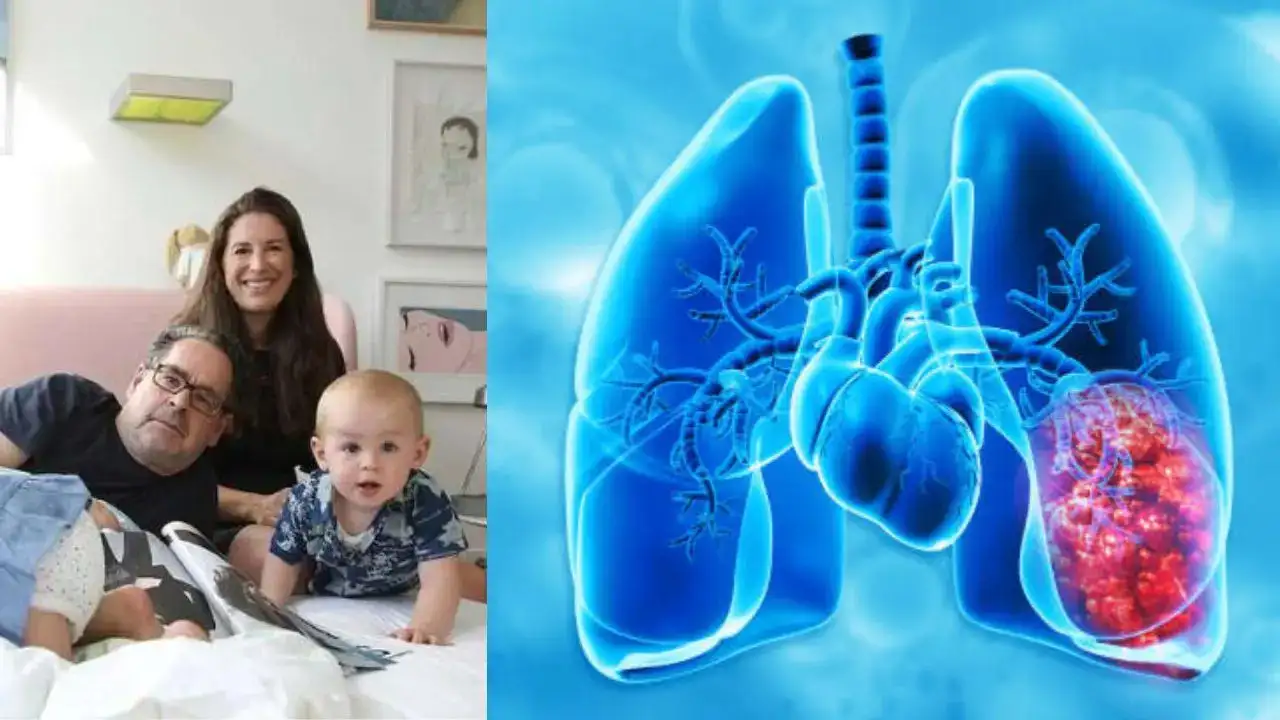
Cornelia registered for the DREAM which included double-lung transplants for patients with advanced cancers (Pic: Healthday/iStock)
A 40-year-old German woman whose chronic pneumonia was diagnosed as advanced lung cancer got a new lease on life after a novel approach to double-lung transplantation that saved her life. Art dealer and historian from Berlin, Cornelia Tischmacher, was diagnosed with stage 3 lung cancer just eight months after giving birth to twins.
Being a non-smoker and leading a healthy life, the diagnosis came as a shock to Cornelia, who underwent surgery and chemotherapy, but her cancer came back the next year. Doctors told her that her prognosis looked grim, and subsequently, her lungs began to fail.
By last year, Cornelia could no longer breathe without an oxygen tank.
However, as Cornelia and her family started to prepare for the worst, she discovered a first-of-its-kind clinical trial in the United States for patients just like her. “My feeling was like, ‘of course I want to try it… If this is the only option in the world,” Tischmacher told Euronews Health. “At the same time, I knew I had no idea how successful something like this could be.”
Cornelia underwent a bilateral lung transplant.
Cornelia registered for the DREAM - Double Lung Transplant Registry Aimed for Lung-Limited Malignancies—programme, which included double-lung transplants for patients with advanced cancers that were limited to the lungs, in Chicago. “During our first telehealth visit with Cornelia, it was clear to us that she was at the end of the road,” Dr. Ankit Bharat, chief of thoracic surgery and director of the Northwestern Medicine Canning Thoracic Institute, said in a news release.
“Cornelia had failed every other medical treatment available to her, including surgeries, chemotherapy, and immunotherapy, but the cancer continued to progress to stage 4 and became so advanced that it was causing her lungs to fail,” said Bharat, who performed Cornelia's surgery. “She couldn’t breathe, and a lung transplant was her only option to fix the lung failure, remove all the cancer cells from her body, and give her a fighting chance to be there for her twins,” Bharat said.
Cornelia underwent surgery on Christmas last year. “Receiving my lung transplant on December 26 was the best Christmas present I could have asked for,” she said. “I remember waking up and thinking for the first time in a long time, I will be able to go to museums and go for bike rides with my kids without bringing an oxygen tank with me.
“I could finally breathe again,” she continued. “It was such a gift that I don’t take for granted, and I encourage everyone (who is able) to register as an organ donor—not just in the United States, but also in Germany.”
What happens in a bilateral lung transplant?
The bilateral lung transplant surgery involves putting the patient on full heart and lung bypass, gently removing both cancer-ridden lungs along with the lymph nodes, then washing the airways and the chest cavity to clear away cancer cells before putting in the new lungs.
According to experts, to receive a lung transplant, you must have a serious lung condition that does not respond to medications and other treatments.
For a double lung transplant, your healthcare provider will use a scalpel to make a horizontal incision across your entire chest, underneath your breast tissue. The doctor will then remove your diseased or damaged lung and replace it with your donor’s lung. They will connect your blood vessels and airways with small surgical needles and thread. Blood vessels allow your transplanted lung to receive blood, which keeps your tissues alive.
Once the blood begins to flow to your transplanted lung and air passes through your airways, the doctors will place small silicone tubes in your affected areas to drain blood, fluid, and air out of your chest. These drainage tubes also help your new lungs expand entirely. They will also disconnect you from any machines that were used to facilitate the surgery. They won’t remove the mechanical ventilator or the catheter.
Finally, they will stitch your incision closed and cover your affected areas with bandages.
Get Latest News Live on Times Now along with Breaking News and Top Headlines from Health and around the world.
